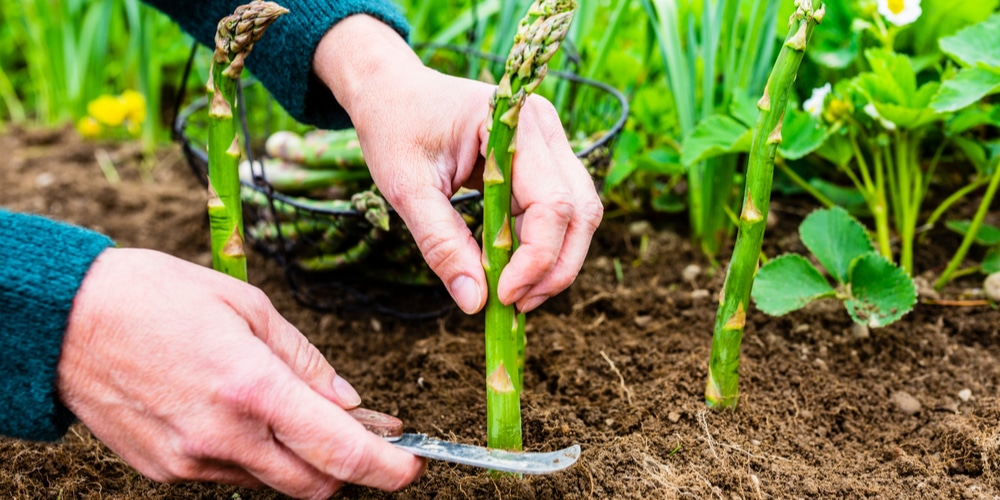Asparagus plants are long-lived perennials that can give you plenty of nutritious vegetables, called ‘spears’, during their growing season. If you’re planning to grow asparagus in your garden, then you’ll definitely want to prepare for it. Some gardeners might think, ‘do asparagus plants multiply?’
How does asparagus spread in the garden? Knowing the answer to these questions can help you know how much you should get to start a vegetable garden in your home.
Do Asparagus Plants Multiply?
Yes, asparagus plants are known to spread and send up multiple spears once they’re established in the ground or garden bed.
Asparagus have these vigorous roots that can spread quickly and up to 6 feet across underground. The way these plants behave is that they send up shoots or asparagus spears where the roots are, so it would appear that they multiply.
A single asparagus crown, which is a mass of roots, will fill up its immediate space with the right conditions and soon send up spears. The key to having a thriving asparagus yield is to give it full sunlight. Plant in rich, moist, and well-drained soil with plenty of space to grow.
Asparagus plants can serve you for a long, long time. They can live for decades and produce innumerable asparagus spears that you can eat.
The one thing you have to know about taking care of asparagus plants is that they don’t like to be crowded. You’ll know when it’s time to divide the crown roots and transplant them to a new location if the spears aren’t as thick or healthy as they were before.
How to Encourage Asparagus Plants to Multiply
In order to have many asparagus plants in the near future, you will need to meet its growing requirements, namely full sun, rich and moist soil, and space.
It’s recommended that you start with asparagus crown roots instead of seeds so you can cut back on the time it takes to be ready for harvest. Generally, asparagus seeds need one more year to reach maturity, while a crown needs less time to be established and start growing foliage.
You must observe the correct planting depth and spacing so the asparagus plants won’t get crowded quickly. Spacing somewhere between 14 to 18 inches apart is good, as is leaving a space of 4 feet (about 48 inches) in rows so you won’t accidentally step on them.
The correct planting depth for asparagus crowns is about 6 inches deep, with the crown submerged in about two inches of soil.
For an asparagus plant to thrive it needs full sunlight. It’s worth noting that asparagus are long-lived, so making the correct decision in location will save you time and effort from having to replant them later. Asparagus loves full sun and can tolerate moderate heat quite well, provided you irrigate and keep the soil moist.
The soil should be loamy and amended with sand to make it loose, which will encourage the roots to spread. Furthermore, the medium should be free of weeds or any debris, such as sticks and rocks. You can aim for a pH of 6.5 to 7 (neutral) so the plant will stay strong and healthy.
Lastly, asparagus plants should be watered frequently, or else they won’t produce shoots. Water will help the plant grow and for its roots to spread, but you shouldn’t overwater or keep the soil overly wet either.
Does Asparagus Multiply On Its Own?
A healthy asparagus plant will multiply, or send out roots that grow spears if it’s healthy and free from diseases. If the growth has slowed and there’s less foliage, then you’ll want to divide the roots. More often than not you’ll find that the soil is crowded.
Dividing an asparagus crown is relatively easy, and you’ll have more plants to grow or share with your fellow gardening or vegetable enthusiasts. Dig up the asparagus and choose root clumps you’d like to divide- shake excess soil or rinse with water so you can see the roots more clearly.
Cut the crowns and make sure each one has small, whitish shoots appearing from them. You can use a garden knife or a pair of garden shears to complete this process. Afterward, you can plant each crown as recommended and water them in.
Related article: Asparagus Growth Stages


